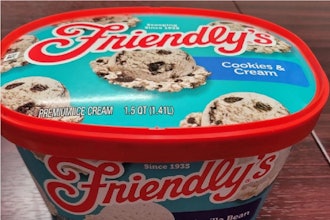WASHINGTON (PRNewswire-USNewswire) — Divided by a decade yet the results are the same: American consumers remain confused by "% less Sugar" claims on product packages.
In separate polls conducted on behalf of The Sugar Association by phone in April 2004 among 1,000 U.S. adults and online by Harris Interactive in October 2013 among 2,000 U.S. adults — consumers were asked if they felt "that a product that promotes on its package that it contains '50% less sugar' when it contains no sugar but is actually sweetened with high fructose corn syrup is misleading."
The results? Virtually identical. In 2004, 86% of Americans replied "yes." Nearly a decade later, 84% replied the same way. A statistical dead heat.
"The more things change, the more some things stay the same—that's the unfortunate lesson we learned," said Andrew Briscoe, CEO of The Sugar Association. "Two consumer polls taken nearly 10 years apart yield virtually identical results, yet the Food and Drug Administration has not addressed this ongoing concern."
Confusion around this issue is one of the reasons The Sugar Association petitioned the Food and Drug Administration (FDA) in 2005 to, among other things, prohibit use of the term "sugar," a specific ingredient used for centuries, to represent other caloric sweeteners in products that make claims like "less sugar." The Sugar Association in their petition called for regulations to specify that use of the term "sugar" refer only to sugar/sucrose and not other caloric sweeteners. That petition is still pending.
Some products that use "% less sugar" claims actually contain the same or more calories than the regular sugar version and, therefore, do not offer any health benefits to the general consumer.
"Food labels and front of package claims are there to help consumers make informed choices," Briscoe concluded. "But if the label gives consumers false or misleading statements, the FDA is doing them a disservice by allowing this to continue."
The importance of consumer education is one of the reasons The Sugar Association recently launched its "Know Your Sweetener" effort, complete with an online video titled "What is Sugar," as well as a series of articles in which many of the various sweeteners widely consumed by Americans every day are examined in detail. Learn more at www.sugar.org.
Survey Methodology
The 2013 survey was conducted online within the United States by Harris Interactive on behalf of The Sugar Association from October 16-18, 2013, among 2,014 adults ages 18 and older. This online survey is not based on a probability sample and therefore no estimate of theoretical sampling error can be calculated. For a full methodology, including weighting variables, please contact Tonya Allen; [email protected].
The 2004 survey was conducted by Wirthlin Worldwide on behalf of The Sugar Association from April 2-5, 2004, among 1,000 U.S. adults ages 18 and older via phone using the exact same consumer question. Wirthlin Worldwide was sold to Harris Interactive in September 2004.





















